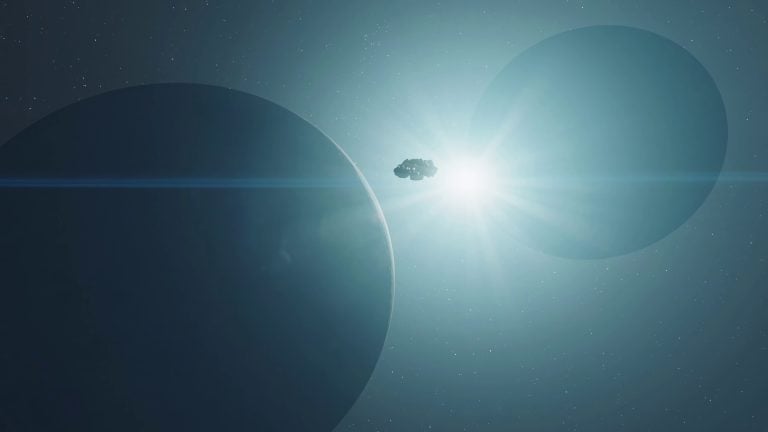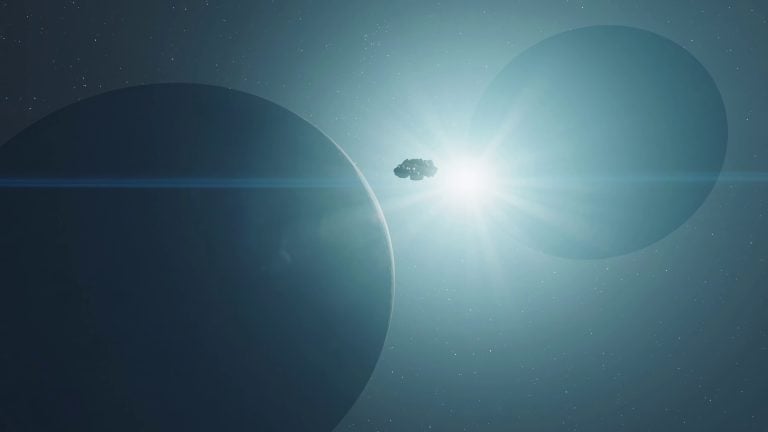It is unusual for a game’s start screen to become the focal point of a discussion that includes influential figures from the industry, fans, and casual players. However, Bethesda‘s most recent game, Starfield, has done just that on its start screen.

You can’t help but wish for the world to end as soon as possible if only to stop the internet from talking about Starfield if only temporarily.
Former Blizzard developer Mark Kern criticized Bethesda’s simplistic style over the weekend on Twitter (or rather, X). The opening screen of the game, according to Kern, “reflects either hasty shipping deadlines by a passionate team overworked” or possibly “a team that didn’t care,” in a thread that, for some reason, attracted the attention of many.
The significance of a game’s opening screen is a topic of ongoing debate in the industry. It establishes the tone since it gives players their initial impression. The latter was alluded to by Kern, who said that the start screens, which often appear towards the conclusion of a game, are a reflection of a team’s pride—or lack thereof.
Or they designed what they wanted and that s been our menu for years and was one of the first things we settled on.
Having an opinion is one thing. Questioning out a developer s care because you would have done it different is highly unprofessional coming from another dev
Pete Hines (@DCDeacon) August 20, 2023
You’d be mistaken if you believed that this was the end of it. The head of publishing at Bethesda, Pete Hines, didn’t bother to take the time to defend his group and their plan. Hines responded forcefully but professionally, saying that Bethesda’s minimalist start screen is a part of their design DNA and has been present in all of their RPGs for more than 20 years. “It’s one thing to have an opinion. It is extremely unethical to question a developer’s “care” because you would have handled something differently, Hines stated.
After some additional thought, Hines’ sentiment—while superfluous and probably the result of passion—makes sense. As “lazy” as Kern could describe it as being, it is similar to what we have seen in recent games. For instance, the layout of this year’s co-frontrunner for Game of the Year, The Legend of Zelda: Tears of the Kingdom, is comparable. The architecture of Bethesda has historically been attractively simple. Consider The Elder Scrolls V: Skyrim, whose start screen was harmoniously matched by a harsh Nordic landscape.
Get our newest content first by following Xfire on Google!
In addition, isn’t the goal of the start screen to get you into the game as quickly as possible from the start menu? We’re all for enjoying a game’s start menu, and Starfield’s is not inherently flawed. It’s reminiscent of other legendary start screens, like as, for instance, the first Mas Effect game, with its ambiance and fantastic soundtrack.

But does Kern really have a point, or is he just venting without reason? It’s difficult to say at this time. The discussion surrounding Starfield has changed so drastically that it has given rise to a separate story. According to the most recent reports, Bethesda is removing early review copies of the game due to a previous leak, much to the dismay of another Bethesda executive.
Beyond the debate, Bethesda’s dedication to its design philosophy and reverence for the brilliant minds that created the game are obvious. Hines’ statement honored his team’s dedication and foresight in addition to providing a defense against a Twitter thread. The same refined mindset was apparent when Bethesda congratulated Larian Studios on Baldur’s Gate 3; come September 6, Larian will probably do the same.
The argument over Starfield’s start screen might seem like a tiny blip in the larger scheme of things. But it draws attention to a more significant problem: the need for compassion, comprehension, and respect in the gaming community. It may be essential to keep in mind that games, like art, are subjective in a field that lives on creativity, passion, and long hours of labor. One person’s simple aesthetic may be another person’s masterpiece.

One should constantly keep in mind that, occasionally, in the midst of contentious debates, a touch of humor provides the finest perspective.
